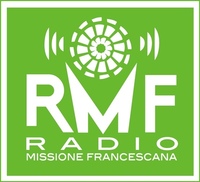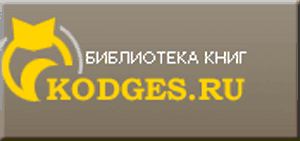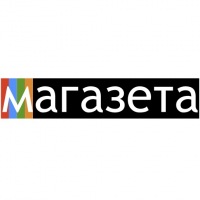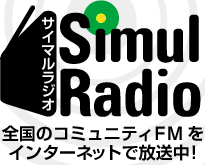 |
| Every piece of lace has two edges. Of course, it has a start and end as well, but these are not usually part of the design. When working the lace, you position the pattern so that the two edges are to the left and right. The straight edge is the footside. In English lace the headside is usually worked on the left. (There is no particular reason to do this, and European lace usually has the footside worked on the right.) This edge of the lace is most visible, and so usually it has an attractive shape which may be wavy or frilly.
|
General comments about headsides
 | Cloth Fan HeadsideThe cloth fan headside is worked in cloth stitch. It is similar to a cloth diamond, except you take up and lose threads only from the right. The left edge, which is the edge of the lace itself, is given a slight wave by where the pins are positioned. These are not a normal Torchon grid, but are placed in a curve (see pricking pattern on right). On the left, the diagram has two twists to the thread round the edge pins, to give a decorative effect on the very edge of the lace. You can give more than two twists, or one or none, if you prefer. The top photo on the right shows a Torchon fan headside with a thin trail of cloth stitch inside. This is taken from the narrow zigzag pattern. The bottom photo shows a Bucks Pont fan, which is worked the same way but has different proportions. It is taken from one of the beginners patterns. |    |
 | Half Stitch Fan HeadsideThe Half stitch fan headside is worked similarly to the cloth fan headside, except it is worked in half stitch. The photo on the left shows it next to some Torchon ground. The photo also shows the effect if you twist the bobbins several times at the edge of the lace. If you don't do this, you can end up with rather a loose edge. See photo on the right. This has a trail of half stitch next to it. Whenever you work half stitch, the pairs of bobbins get split up. |  |
Other types of Simple FansThere are many types of fan. In each row, you can twist the workers (the bobbins which move across the pattern) just before the outer passives (which hang down). This gives the effect of the fan on the left in the photo. Or when half way through the fan, you can twist each pair of passives. This gives the fan on the right. You do not need to restrict yourself to a single type of fan in a pattern. The photo on the right shows several fans in one piece of lace. The butterflies lace has an even more bizarre combination, where half the fan is cloth stitch and the other half is half stitch, with a cunning use of colour, so the cloth stitch part looks like butterflies. The clutter of spiders has fans of different sizes. |  |
  | Twisted Fan HeadsideThis headside is used in the zig-zag lace pattern. The pricking pattern is on the right. If you want, you can make the outer edge of the pattern more curved, like a fan. The worker threads for the main fan are red. They work across the passive threads with cloth stitch and twist. There may be extra twists in between to keep the pattern taut (although I haven't shown any). There are no pins for most cross-overs (see pricking pattern on the right), only at each end of the zig-zag of the worker threads. Although I haven't marked them, you may prefer to have pins at the right edges of the fan as well, to get the threads in position before and after the working of the fan. It depends what you have to the right of the fan. The worker threads of one fan become the outer edge of the next, and vice versa. This means, with careful chosing of coloured threads, you can get alternate fans different colours (see right). You can even swap the colours over mid-fan - see fireworks lace for several effects. This lace will need careful tightening while being worked, as you have a lot of cloth stitch and twist without pins. If you work this pattern with cloth stitch instead, you get a different effect (see left). It also needs less tightening! |    |
 | Plaited HeadsideThis is a simple but effective headside, and there are two versions of it. The one in the photo and diagram, and top pricking pattern is used in the diamond mat. This is based on a Maltese lace mat. The other is a headside in English Maltese lace. It is the same, but with two picots added along the outer edge, as in the second pricking pattern. This uses 4 pairs of bobbins in two groups. Each group is plaited between the pins. The two groups cross over with a lazy join. Add the picots if you like them. If you don't, then the two pairs of the outer group go either side of the outer pin at the point. This type of headside has its threads independent of the rest of the lace, unlike Torchon headsides, which tend to be an integral part of the lace. This means that it is easy to add these plaited headsides onto different designs, but the working may vary from one design to another. If the leg of the headside is meeting another leg, then you can cross them over in a lazy join, which means that some bobbins will leave the headside and others join it. If the leg is meeting a single pair of bobbins (such as in a footside) then you can work the single pair of threads across the threads of the leg in cloth stitch, pin, then cloth stitch back again. I've shown this on the left. When using plaits, make sure that you don't do too many stitches between the pins. This makes the plait too long to fit, and will give a baggy result. Too few may let you see the individual threads, but will at least be taut. The correct number will vary on the thickness of the cotton and the size of the pattern. Once you have worked out the correct number, remember it and use it consistently throughout the pattern. It's surprising how often a consistent result looks convincing! |    |
 | Nine Pin HeadsideThis is a traditional English Maltese pattern. I have been told that the name comes from using 9 pins per head, but it doesn't! An alternative explanation is that nine-pins is a skittles game, with 9 skittles set on a diagonal square. A nine pin edging or head is because they stick up like skittles. It is used in this beginner pattern. You can use the diagram on the left as a pricking pattern. It uses 4 pairs of bobbins in two groups. Each group is plaited between the pins. Where two groups cross over, there is a lazy join. The legs are fastened to the pins using picots. There are spare pins where the headside meets the rest of the lace. You can join this headside to the lace via a lazy join, if it is meeting a leg, or cloth stitch to meet a single pair of threads. |  |
 | Crown HeadsideThis headside is used in this beginner pattern. The photo to the left shows it attached to a twisted footside. You can use the diagram on the right as a pricking pattern. It uses 6 pairs of bobbins in three groups. Each group is plaited between the pins. Where two groups cross over, there is a lazy join. The legs are fastened to the pins using picots. There are spare pins where the headside meets the rest of the lace. You can see in the photo how any threads coming in at this pin just go round the pin and back into the pattern. Here they meet a single pair of threads, so these work across the leg bobbins in cloth stitch. If this headside is next to other legs, then they can cross each other in a lazy join. |  |
 | Trail HeadsideThis headside is often used in English Maltese patterns. It is used in this flower pattern. It is a trail of cloth stitch, but unlike Torchon zigzags, it keeps the same width, but has different numbers of bobbins in it at different points. This particular trail has one pair of worker bobbins and three pairs of bobbins permanently in the trail. There are two more pairs which join the trail from time to time, then leave it. At the top in the picture, there is the worker pair, and five passive pairs. Two pairs leave the trail to make the top tally, leaving three pairs as passives in the leftwards bulge. Two pairs join again at the second tally, and leave the trail at the bride, in the middle of the rightwards bend. They join again a couple of rows later, at the second bride, so there are five passives at the bottom of the picture. This technique allows you to 'lose' spare threads by hiding them within the trail. The pinholes are not necessarily regular, as trails are usually curvy. Here I've put slightly more pinholes where there are going to be less passives, to bulk out the trail with more to-and-fro of the worker pair. The different number of threads is obvious in the photo, but not in the finished lace (except to lacemakers, of course!) The worker pair are used throughout the trail, so need far more thread wound onto them than the other bobbins. The permanent number of passives will vary according to the width of the trail, and indeed the thickness of the thread, how dense the trail, and how many bobbins you can fit on your pillow! I've twisted the workers twice at each pin (except where I've forgotten, looking hard at the photo!) to give a slightly frilly edge. |  |
  | Serpent HeadsideThis is used in the serpentine edgings. It is a trail of cloth stitch with the occasional pair leaving the trail, and twisting several times before rejoining it. The second pattern has wiggles of different lengths, but the principle is the same (see second pricking on the right).The lace edge of this headside is straight rather than at an angle like most Torchon patterns. So you need some other technique to join it to the main lace. The threads pattern on the left shows each pair as a single colour. The worker is red. Since the worker pair does a lot of work, you should wind lots and lots of cotton on the bobbins! |   |
 | Bucks Point Cloth Fan HeadsideThe Bucks Point cloth fan headside is worked exactly the same way as the Cloth fan headside. However, the Bucks Point grid is different, with the pinholes set in triangles rather than diamonds, so the fan is a different shape, thinner and more pointed. The photo shows it set in Bucks Point ground, and the pricking pattern on the right shows some ground stitches round the fans. You can run a gimp thread round the fans to outline them if you wish. |  |
 | Bucks Point Passives and Picots HeadsideThis is a standard Bucks Point headside. It may not be marked in the pricking except as a row of holes. There are at least two pairs of passives (marked green in the diagram). The worker threads are worked across the passives in cloth stitch to the edge. Then they are worked in a picot round the edge pin, and are worked back across the passives to return to the lace pattern. This is similar to a cloth footside except the worker threads both go to the edge and return, as opposed to one pair going to the edge, and swapping with another, which returns. Also, you don't get picots in footsides! It is also similar to trail headsides. But trail headsides are usually reasonably independent of the rest of the lace, with the worker threads working to and fro, possibly for the whole headside, and some of the passives disappearing off to the rest of the lace, or returning back again. This Bucks Point headside has the worker pair returning to the lace, with usually a completely different pair coming back again for the next pin. This headside is used in this It is used in this beginner pattern. |  |
 | Part Twisted Fan HeadsideThe headside on the left is used in my wavy lace patterns. This fan has the workers feeding through all other bobbins each time. The position of the pins gives the shape of the fan. It has an interesting hole at the base of the fan. See right for the pricking pattern of the fan plus a little surrounding ground. The pins on the right of the fan are very close together. The pattern also gets rather sparse on the left, at the very edge of the lace, so instead of the left pair of bobbins being worked with cloth stitch, like the others, they're worked with cloth stitch and twist, and the worker bobbins are twisted just before working the edge bobbins. It is up to you how many twists you do, since this depends on the size of the pattern, the thickness of the thread and your own personal preference whether you like loose or tight lace. Here, I have shown a double twist to the outer edge to give tightness to the edge of the lace. You could give double twists of the worker bobbins round the pins on the left, at the edge of the lace. This will give small gaps right at the edge, which will make the finished lace look more "lacey". All this twisting does mean that you will have to tighten the threads more often. You will learn from experience how often you have to tighten your threads, probably by having a piece of lace with small loops in it! |   |
 | French Fan HeadsideThis is similar to the Part twisted fan headside above, except that it uses a single pin at the base of the fan. This shows a complete piece of lace with footside, but you could use it as headside for a more complicated piece of lace. The spokes of the fan are made by the red threads (right) which work across the three passive pairs, green, mid-blue and pale blue. The stitches are cloth stich, with a twist wherever you can see a long enough thread (i.e. not betwen the stitches making one spoke, and not at the base of the fan). At the base of the fan, there is only one pin, but you need it to anchor several rows. When the red threads come to the base of the fan for the first time, work them through the pale blue threads, put the pin in, then work the red threads back again. The next time the red threads come back to the base, work them through the pale blue threads again, and loop the pair of red threads round the pin, then work them back through the pale blue threads. This is done a third time as well. It does lead to a lump of threads round that pin. It helps to tighten the pale blue threads when you've finished the base of one fan. |  |
 | Ribbon HeadsideThis is rather a strange headside, as it is part of the ribbon footside! Still, this part of the pattern is really more like a headside, and I don't see why you shouldn't use it as such. All the lines are single pairs of bobbins, worked in cloth stitch and twist, with extra twists if necessary. It is up to you how many twists you do, since this depends on the size of the pattern, the thickness of the thread and your own personal preference whether you like loose or tight lace. |  |
 | Simple Ribbon HeadsideThis is a simplified version of the previous headside. It can be used with a narrow ribbon, or the gaps left unused as decoration. I have used different colours here, but you could use all the same colour. All the lines are single pairs of bobbins, worked in cloth stitch and twist, with extra twists if necessary. It is up to you how many twists you do, since this depends on the size of the pattern, the thickness of the thread and your own personal preference whether you like loose or tight lace. The previous pattern was really a very simplified fan made of cloth sttich and twist rather than cloth stitch or half stitch. Here I have simplified it even further. There is no real worker pair. Rather, two pairs continually cross over each other, and the remaining pair act as a passive. Next to the headside are gaps. |  |
 | Maltese HeadsideThis is used in this diamond mat and in the original Maltese lace mat. The outer edge is 2 pairs of bobbins plaited together. All other stitches are cloth stitch and twist, with extra twists where necessary. There are two passives, and the worker bobbins travel through them from the edge to the rest of the lace and back again. The zig-zag edge is caused by the positioning of the pins.The pricking pattern on the right doesn't show the passives, or the workers. |   |
Hearts HeadsideI think that I've invented this! It is a variation on a cloth fan headside or half stitch fan headside. It is worked in exactly the same way, except that the fans on the very edge are places where shown. Here I have made the worker threads different from the passives. You can work it all in the same colour of course. The cloth heart does tend to have a concentration of passives near the inlet of the heart, so perhaps the half stitch version works better. It is used here. |
   |
General comments about headsidesA typical piece of lace has a headside and a footside. The footside is straight and strong, since it is used to sew the lace onto something. The headside is looser. This can mean that when you take the piece of lace off the pillow, it seems to form a curved shape, like a collar. This doesn't matter. If you are sewing it to something, then the footside will straighten out. The headside adjusts by waving backwards and forwards, which forms an attractive effect. You can even emphasise that effect by gathering the lace, if you wish. If you want a flat piece of lace which isn't sewn to anything, and doesn't curve, then I suggest that you make an insertion, with footsides on both sides. These double footsides will keep the edges straight, and the pattern is more visible between them. If you find double footsides boring, then try a headside on both sides instead. This can make an interesting bookmark. If you keep the headside design on both sides the same, the lace should be balanced and not curve. However, if you want a headside and footside on your lace, and don't want it to curve or wave when sewn to something, then I suggest doing the sewing, then pull the headside (gently!) away from the footside. This may persuade the threads to straighten out. You can try this before sewing as well, if you want. Another method is to damp the lace, then pull it into shape, and iron it, which will make it keep its shape. Make sure that you don't use too hot an iron for the type of thread. You could try working the lace so the headside is firmer. Use an extra twist or two at the very edge. Use a headside which isn't too big, or has shallow curves, as these approximate to a straight line better. Make sure that you tighten the threads at the very edge well. Generally speaking, Torchon lace likes the threads to be pulled quite tight (but don't pull out the pins!). I've heard this called the "Torchon Tug". Tension in the rest of the lace doesn't matter so much, as much of the thread runs in straight lines. But at the edge, they turn, so make sure that there are no sneaky loops, or loose bits. |






































































































































.jpg)















































.jpg)





































































































No comments:
Post a Comment